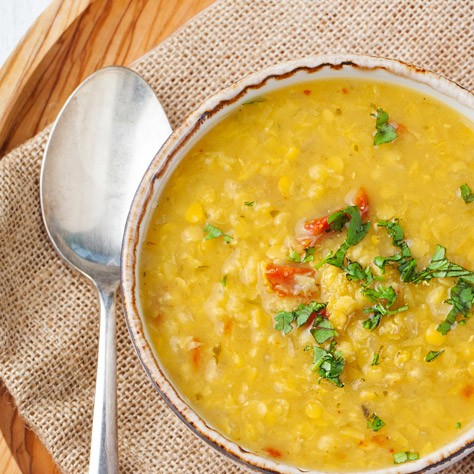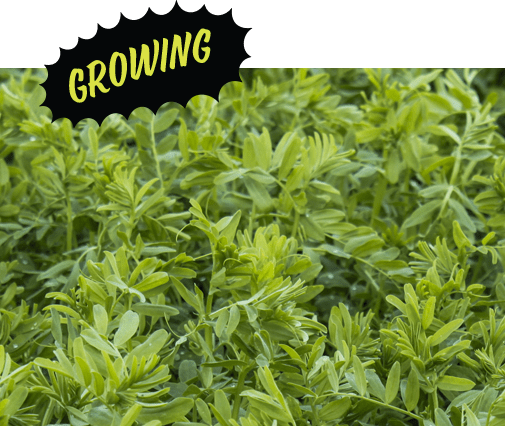Lentils

Often used for hearty soups or tasty curries, lentils are a staple ingredient in cuisines around the world. Low cost and packed with fiber and protein, these coin-shaped superfoods are accessible, nutritious ingredients for the masses. Available in a variety of sizes and colors, each lentil type has unique qualities that make them useful in different ways! Some common types of lentils found on grocery store shelves in the U.S. include Green, Red, Brown, Pardinas, French Green (smaller and more firm than standard green lentils) and Black.
Lentils are a powerful pulse with endless possibilities!






You might be surprised by just how incredibly packed with nutrients these tiny pulses are! Lentils are good sources of soluble and insoluble fiber, which support regular bowel movements and healthy gut bacteria. Just ½ cup of cooked green lentils provides 32% of your daily value of fiber. Popular as a plant-based source of protein, lentils also pack in about 9g of protein per ½ cup cooked serving. They are also low in fat, with 17g less fat per serving than pork, for example. Additionally, out of all plant-based foods, lentils contain the most folate, a vitamin that helps the body build new cells – which studies show is especially important for pregnancy. You’ll also get potassium, magnesium and iron in these powerful pulses.
Nutrition Facts
PER HALF-CUP COOKED SERVING
| Lentils | Green | Red | Small Brown |
| Calories | 115 | 170 | 110 |
| Total Fat | <0.5g | 0g | 0g |
| Sodium | <2mg | 0mg | 0mg |
| Carbs | 20g | 28g | 20g |
| Fiber | 8g | 5g | 8g |
| Protein | 9g | 12g | 9g |
| Iron | 3.3mg | 4mg | 3mg |
| Potassium | 366mg | 277mg | 365mg |
| Magnesium | 36mg | 25mg | 36mg |
| Folate | 179mcg | 98mcg | 179mcg |

Stovetop
1. Rinse lentils with water—no need to soak!
Use a strainer to check for pebbles or debris.
2. Combine lentils + water, bring to a boil.
For every cup of lentils, use 2.5 cups of water.
3. Simmer! Most types of lentils need to simmer for 20-40 minutes until tender.
Some types of lentils (like split red lentils) only take 5-10 minutes.
Pressure Cooker / Instant Pot
1. Lentils do not require pre-soaking.
2. Add dry lentils and water to the pressure cooker.
For every cup of lentils use 2 cups of water (or ensure pulses are covered by at least 2” of water).
3. Cook on low pressure for 10-15 minutes.
Let the pressure release naturally.
4. Drain and use in a recipe or store in an air-tight container.
Tip: Do not fill the pressure cooker more than halfway, as the ingredients will expand.

Beyond dry and canned varieties, you can find lentils in a variety of products, including gluten-free chips, pastas, soups, purees and more.

For veggie and grain bowls, incorporate lentils into your grain base for added protein and fiber
Mix green or brown lentils with ground meat and seasonings for taco filling or spaghetti bolognese
Use red lentil puree instead of oil when baking cookies for a protein-rich dessert
Cook a classic pot of lentil soup filled with seasonal veggies for a comforting meal
Thicken soup using pureed red lentils
Toss them in salads for an easy source of added protein
Try your hand at cooking a staple Indian dish called dal – you can find many simple and flavorful recipes online



Historically, nearly 90% of the lentil crop in the U.S. is exported to other countries, but domestic consumption is on the rise, especially with the increasing popularity of plant-based and flexitarian diets!
In North America, lentils are planted in early spring and harvested in late summer. The two principal growing regions include the Northern Plains, comprised of Montana, North Dakota and South Dakota, and the Palouse, which includes eastern Washington, northern Idaho and northeastern Oregon. By seeding early, farmers can increase the height and size of the plant at first bloom. Just like all other types of pulses (chickpeas, dry beans and peas), lentils are harvested dry and in a shelf-stable form.



You can keep lentils in tip-top shape for up to a year when kept in a cool, dark location. If you purchase your lentils in bulk or have open packages, be sure to transfer them to an air-tight container to maximize the full shelf life. Due to their long shelf life and ease of storing, lentils and other pulses help alleviate consumer food waste compared to fresh fruits and vegetables. Along with being water efficient, nitrogen fixing, and improving soil diversity, the contribution of pulses to the total global food waste footprint is relatively low, meaning they are an environmentally friendly source of important nutrients.

Lentils have been a staple in Middle Eastern and Indian diets dating all the way back to 2500 B.C.
Lentils gained popularity in the Americas during WWII when they were promoted as an alternative to meat.
Roughly half of the world’s lentils are consumed in India alone.
In Jewish culture, lentils are a symbol of the circle of life, death, mourning and constant renewal thanks to their round shape and the fact that they have no “eye” like beans do.
In Italy, lentils are served on New Year’s Eve after midnight, representing luck and prosperity due to their coin-like shape.